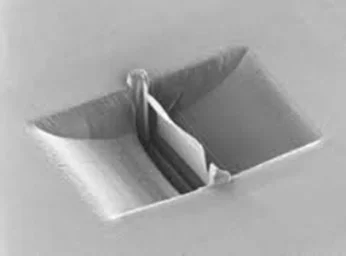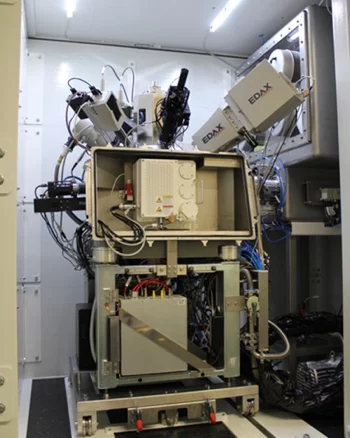The implementation of Focused Ion Beam instruments in material research laboratories during the last decade has not only strongly improved the preparation of very tiny specimens for the Transmission Electron Microscope (TEM), in particular at interfaces, but also led to the development of new analyses methods inside the instrument itself.
These comprise chemical analyses with element detectors and structural analyses on the basis of electron backscatter diffraction, revealing information about crystallographic orientation, grains and even local strains.
Due to the strong size reduction of samples, also highly radioactive specimens can be investigated.
The AHL is commissioning this new Focus Ion Beam (FIB) machine with large analysis capabilities, which is a common investment of AHL and LNM (50% each) with the financial support of the Swiss National Science Foundation (SNSF) and the PSI directorate (R’Equip).
The Instrument is fully shielded for handling highly radioactive specimens and is equipped with different modern detectors:
- Secondary Electrons (SE),
- BackScattered Electrons (BSE),
- Energy selective Backscattered electron detector (EsB),
- Energy-dispersive X-ray spectroscopy (EDX, 3D analysis),
- Wavelength Dispersive X-ray (WDS),
- Electron BackScatter Diffraction (EBSD, HD camera / 3D Analysis)
that will allow for complete analyses of the composition and structure of the material inside the instrument and the production of tiny specimen at targeted positions (interfaces, crack tips, ...) for further analysis in non-shielded instruments or the large-scale facilities at PSI (e.g. SLS and SINQ).


